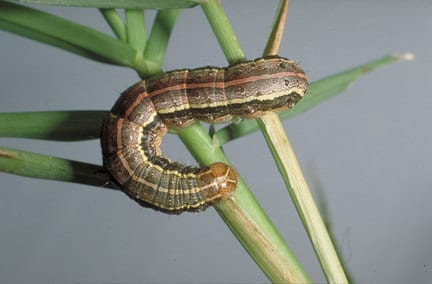There have been a few reports of treatable numbers of fall armyworms in Bermudagrass pasture. So remember to be watching closely, and keep in mind that this is a problem that will often continue into September. UT recommends treatment when 4 or more larvae are found per square foot. An alternative is to cut for hay if it is within a week of harvest. The larvae will not feed on cut grass. A number of treatments are listed for the control of fall armyworm larvae in UT’s insect control recommendations for pasture. Many folks will opt for synthetic pyrethroids because they are economical, effective and do not have a grazing restriction. Examples include Baythroid XL (1.6 – 1.9 oz/acre), Karate (1.3 – 1.9 oz/acre) or Warrior II, and Mustang Max (2.8 – 4 oz/acre). Other common options include Intrepid 2F, Tracer 4F, Lannate, Methyl parathion and Malathion. All should be effective at the recommended use rates. Be careful with Lannate and Methyl parathion in particular and be sure to follow grazing and harvest restrictions. I would not use Methyl parathion or Lannate if spraying with an open cab. A new insecticide, Besiege, has recently also been labeled for use at a use rate of 6-9 oz/acre. This MAY provide more residual control but a a relatively high price. There is no pre-harvest interval or grazing restriction.


